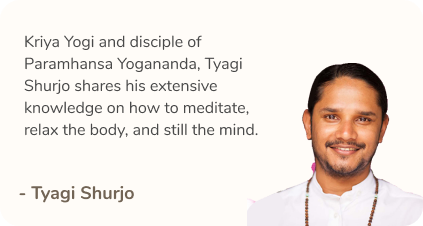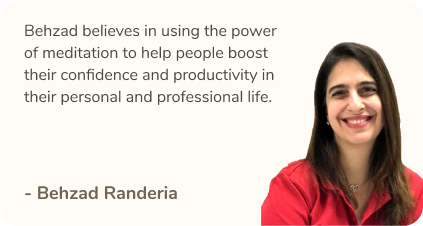Most of us are familiar with helping others when they are upset or anxious but how do you soothe yourself when disruptive emotions take over? Your heart races, your body temperature rises, your hands shake, and your stomach feels queasy. Your thoughts start to spiral, and you feel like you won’t be able to handle it. It can feel very powerless when anxiety takes over; like you’re not in control of your body and mind. But that’s not entirely true. While anxiety appears in mental and physical symptoms, there are several ways we can calm ourselves and be in control. Self-soothing strategies can help regulate your emotional and mental state to regain equilibrium after an upsetting event.
What Is Self-Soothing?
Self-soothing behaviours feature activities that help you feel safe in your body and mind, regulate your emotions, and cope with negative thoughts and feelings. It’s a way to comfort yourself, especially during times of distress. Self-soothing techniques help:
- Reduce impulsive urges
- Decrease symptoms of anxiety, stress, and panic
- Increase the ability to tolerate pain and distress
- Increase mindfulness and being present in the moment
- Decrease physical discomfort
- Reduce vulnerability to intense emotions
- Increase insight into emotional experiences

Self-soothing techniques are essential during moments of distress; when acting on impulses can be harmful; when distraction from emotions is necessary; or when problem-solving isn’t possible at that very moment. They are meant to be short-term, temporary tools to overcome difficult situations and negative emotions, and not as a coping mechanism that’s used as an escape. To help you understand self-soothing better, ThinkRight.me has put together a comfort toolkit that helps you overcome feelings of anxiety and distress. Try these steps one-by-one and see which one works for you best.
Comfort Toolkit For When The Anxiety Hits
1. Breathe Deeply
Your breath is a powerful tool connecting your mind and body. Deep breathing can activate a calming response in your body as it reduces your heart rate and blood pressure, muscle tension, and clears up the mind. Imagine you have a balloon behind your belly button that fills up as you breathe in.
- Inhale through the nose until the balloon feels “full.”
- Exhale slowly for the same amount of time until the balloon is “empty.”
- Repeat until you feel calmer.
2. Listen to Music, Calming Sounds, or White Noise
Calming sounds such as rain, ocean sounds, white noise, or even instrumental music can soothe you during times of distress. Play the sound of your choice and focus attention on it, or an aspect of it. For example, if you’re listening to a song, you may focus on the beats, the music, the lyrics, whatever catches your attention. If you feel your mind wandering, redirect your attention back to the sounds.
3. Describe an Object Using Only Facts
This will help you practice nonjudgment. Pick an object in your periphery and focus your attention on it. While you may be tempted to use adjectives, refrain and instead, describe the object using only indisputable facts to keep your brain engaged with your sense of sight. For example; if you choose a mug, use words like round, white, large, painted, etc., instead of words like pretty, or dirty. Refrain from picking judgmental words that may elicit unwanted emotions.
4. Have a Good Cry

People often suppress their emotions because they see crying as a sign of weakness but sometimes having a good cry can be the self-soother you need. Shedding tears releases oxytocin and endorphins which in turn could ease both physical and emotional pain. Crying also releases a number of stress hormones and other chemicals that can be purged from the body through tears.
5. Practice Positive Self-Talk
When we’re in distress, our intrusive thoughts can quickly take over. Positive self-talk can bring the mind back to the present in a safe and caring manner. Self-talk can reduce feelings of anxiety as you use your internal voice to address what is happening and acknowledge there is an end within reach.
Some positive phrases that you can recite are:
- Even if I am feeling anxiety right now, it will pass.
- Even if this feels uncomfortable right now, it will come to an end soon.
- I can cope; I have been through difficult situations before.
- I am more than my anxiety; this is a state that will pass.
6. Give Yourself a Hug
A 2021 study showed that self-soothing touch can reduce cortisol responses to psychosocial stress. Self-touch gestures like placing a hand over your heart or giving yourself a hug can provide an alternative way of reducing strain on your mind and body. If that doesn’t help, reach out to a loved one or friend for help. A simple hug can exponentially reduce your stress response.

7. Practice Mindfulness Techniques
Practicing mindfulness techniques regularly can rewire the brain to enhance executive function and reduce reactivity. Activities like meditation, breathwork, and yoga can work as self-soothing techniques that reduce stress and anxiety as they activate the parasympathetic nervous system and reduce your heart rate.
Some activities you can try are:
- Meditation
- Yoga
- Tai Chi
- Walking
- Focused breathing
- Exercising
To build a personal comfort toolkit on your fingertips, download the ThinkRight.me app.
Learning how to self-soothe is essential for times when you think things are getting out of control. But it is also important to know that you don’t need to go through this alone. If symptoms of stress and anxiety seem to regularly interfere with your day-to-day life, reach out to a professional for help. Working with a therapist can help you learn more coping skills for stress, anxiety, or trauma and help build distress tolerance. If you’re going through a tough time right now, always remember that you will get through it, no matter what.
Read More: Motivation VS Discipline: 7 Ways You Can Workout Consistently
Like & Follow ThinkRight.me on Facebook, Instagram, Twitter, Pinterest and Telegram to stay connected.






























